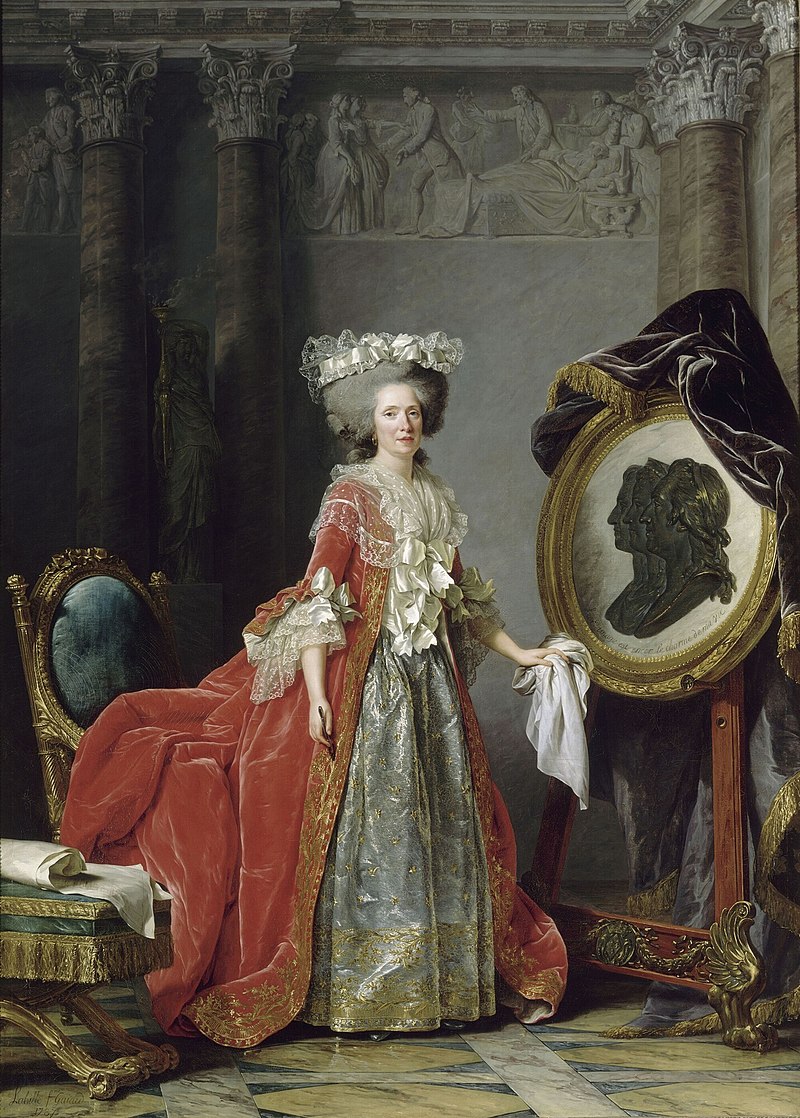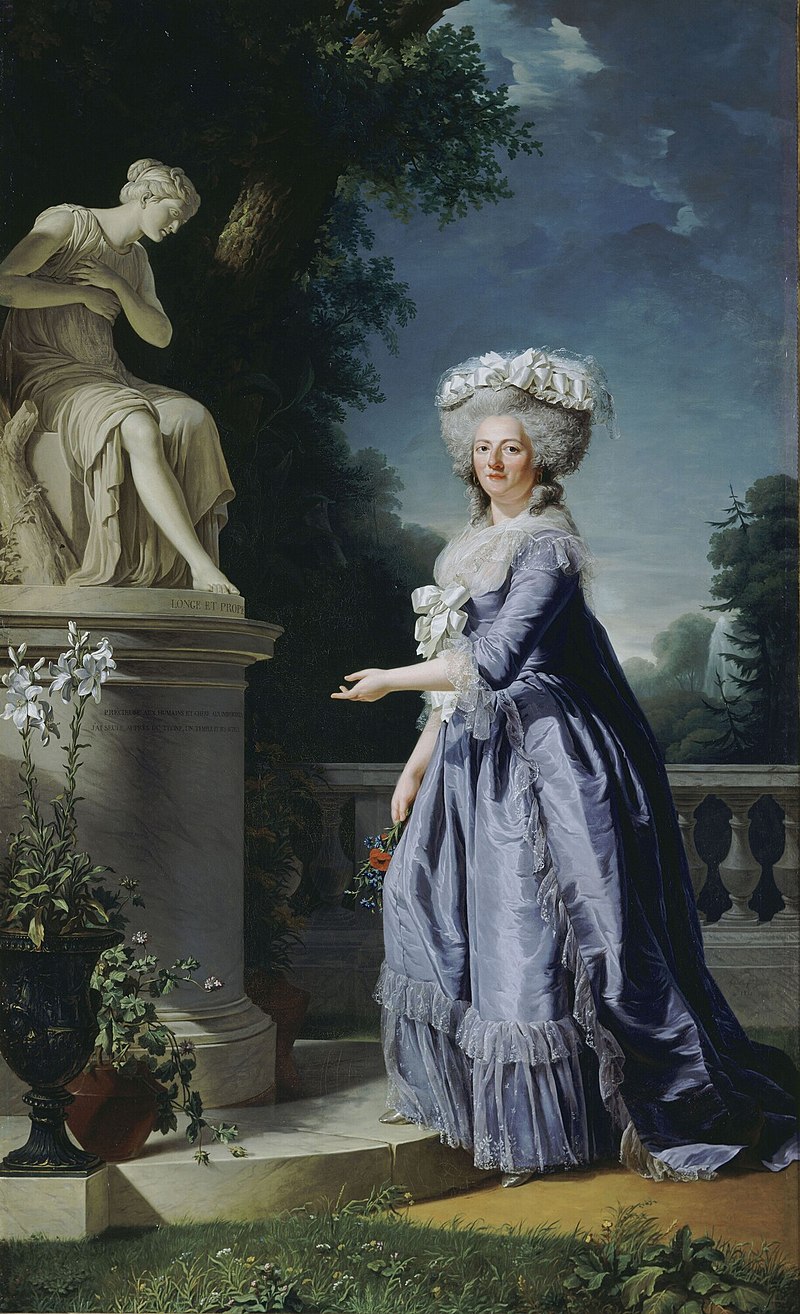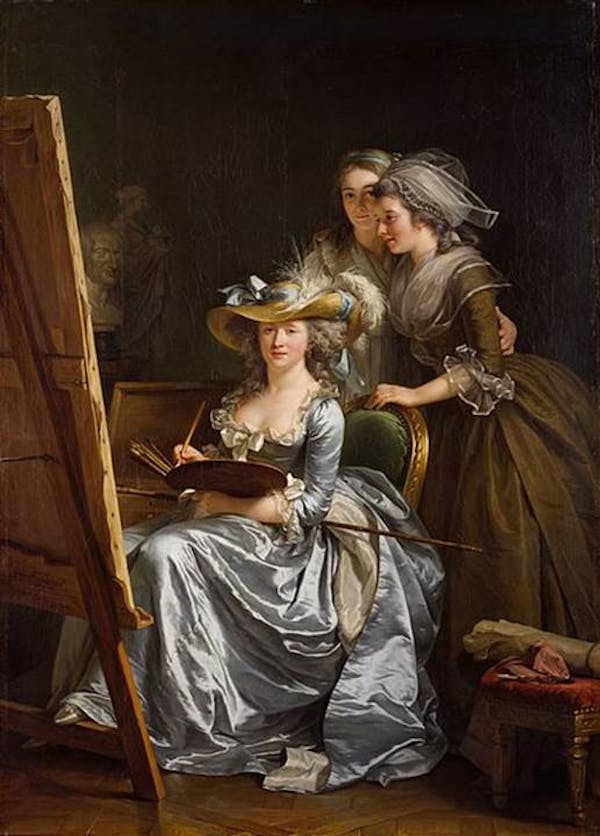The years leading up to the French Revolution saw a flourishing of women portrait painters. From
The Conversation:
In 1783, after intervention from Queen Marie-Antoinette, Adélaïde was finally admitted into the Académie Royale, at the same session as another brilliant, younger woman, Élisabeth Vigée-Le Brun (born 1755). They were two of only a dozen women admitted since 1648. Over the next six years the two of them would become wealthy, sought-after painters of the royal family and members of its court at Versailles. Labille-Guiard experimented with using matt backgrounds to her exquisite portraits, often eschewing the common practice of surrounding sitters with symbols of their status. The two women were receiving fees of tens of thousands of livres for each portrait at a time when most priests, for example, were paid about one thousand annually. Vigée-Le Brun was the Queen’s favorite, painting her 30 times; instead Labille-Guiard painted King Louis XVI’s aunts, but her best portraits were of an unknown woman, her friend Vincent, and a self-portrait with her prize pupil and close friend Marie Capet. (Read more.)
 |
| Madame Adélaïde de France |
 |
Madame Victoire de France
|
Read more about the Aunts and the artists in my book
Marie-Antoinette, Daughter of the Caesars.
Share




















No comments:
Post a Comment